- Home
- Marge Piercy
So You Want to Write Page 3
So You Want to Write Read online
Page 3
In fiction, did we choose the right viewpoint character for our story? Do we need more than one viewpoint? What do we gain and lose if we shift viewpoints? Did I start my short story or novel in the correct place in the chronology of the story? Does my memoir have a compelling beginning or am I doing too much explaining before I get going? Do I need all those flashbacks that interrupt the narrative flow? How’s my pacing? Is my dialog working for characterization, local color, flavor and moving the plot along? Are my characters motivated and believable? Have I telegraphed my punches? Am I making full use of my minor characters? Do I have too many? Too few? What are the functions of each of them? Do I understand my protagonist or protagonists from the inside? Can I feel them? Have I brought them alive? Am I putting stuff into my memoir just because it happened, not because it is germane to the flow of the narrative I am crafting? It is good to remember as much as you can, but once you have remembered, you have to decide which of those memories are relevant and which are not relevant to the particular work in which you are engaged. Not everything you remember matters to your story. Most of it doesn’t.
We are trying to suggest to you questions to ask of yourself and your work when you are not yet doing what you mean to do in a piece. In short, most of what we teach is how to start and how to revise: how to get from the rough stuff on the page to something that resembles the glorious thing in your mind’s eye. The rest is how to work and keep working, and what to do with your product.
2
Beginnings
Fiction is as old a habit of our species as poetry. It goes back to telling a tale, the first perceptions of pattern, and narrative is still about pattern in human life. At its core, it answers the question, what then? And then and then and then. And memoir is equally old: it’s telling about your life, perhaps originally to children or a prospective mate or a new acquaintance.
Poetry is an art of time, as music is. Rhythms are measured against time: they are measures of time. A poem goes forward a beat at a time as a dance does, step by step, phrase by phrase. Narrative, whether fiction or memoir, is about time. First this, then that. Or this—then before it was that. Therefore this. From the perception of the seasons, of winter, spring, summer, fall, of the seasons of our lives, of the things that return and the things that do not return, what we seek and what we find or fail to find, and the dangers and temptations we encountered en route: these are the sources of the fictional intelligence. If you make such a choice (being kind to an old woman on the road, running down an old man, marrying Bluebeard against all advice, apprenticing yourself to a witch), what follows?
Why do ordinary people read fiction or memoirs? The most primitive answer is the most real: to get to the next page. To find out what happens next and then what happens after that; to find out how it all comes out.
That desire for finding a pattern in events—for not all happenings will satisfy us, not nearly, only the “right” ending, the proper disaster or the proper suspension or the proper reward—still functions as a major hunger we bring to the novel. We want stories that help us make sense out of our lives. We want to see all this mess mean something, even if what we discover is a shape perhaps beautiful but not necessarily comforting. Similarly, we don’t want a life like a diary: I went to the store and on the way back I met my old friend George and we talked about the Red Sox and then I ate a banana. Shapelessness loses readers.
Again, the novel is about time and patterns in time. It is not a simultaneous art but one of transition and sequence. You can do a lot with juxtaposition, cutting, transitions, or the lack of them. The effect of simultaneity can be created but only by illusion. A novel or a memoir takes time to read. Therefore, the art of the novel and the art of the memoir involve much persuasion. You must convince the reader to start reading and continue reading. You must persuade her not to put the book down on page one or page one hundred. Not to skip. Fiction and memoir and indeed any kind of narrative requires constant persuasion. The uses of suspense and one of the uses of identification with characters is to make the reader go on turning pages.
You can spend six hundred pages on one night or pass over a hundred years in a sentence. You can start in the classic epic manner in medias res. You can start at the beginning: Josephine was born on a wild wintry night just as the old cow died. You can begin at the end: Josephine was buried on a wild wintry day just as a calf was born to the old brown cow. You can start at the end and go back to the beginning. You can start anywhere on the continuum of days and years and proceed in either direction. You can go in one large or several smaller circles. You can overlap blocks of time from different viewpoints. You can move into parallel or alternate universes. But time is always your servant and master and substance.
Our urge to read memoirs and autobiographies stems from the same source: the desire to understand a life. We believe that by looking at the lives of other people, we can better comprehend our own, both the choices that may or may not be open to us, and the values that have informed someone’s life.
The motive to write about one’s own life may stem from a desire to understand that life, to make sense out of it—in other words, to find a pattern in those events. Or it may stem from a desire to explain oneself, justify, apologize, demand justice. Or from a desire to teach: do as I did, and here is how I did it. Or, almost as frequently, here is how I went wrong, and don’t you do likewise. Or an account of the descent and the ascent, the victory over some obstacle whether inside (addiction) or outside (race prejudice).
The beginning is the most important part of your story or your novel, because whoever does not read the beginning will never read the rest of it. You can’t take the leisure to develop slowly in the first few pages. You are competing for the reader’s attention with the media and everything else going on, plus all the other stories and pieces in that issue, or books on that shelf. Plus, long before that point, if you hadn’t gotten an editor to read your manuscript, you never got published to begin with. Basically you can count on an editor reading your first page in a short story, maybe the first two pages; in a novel, you can count on the first ten pages. If you haven’t grabbed them then, you’re sunk. I am not saying, get your sex and violence up front. That is what a lot of writers do, but in fact it turns off as many people as it turns on, and too much of either right there may draw your pornographic voyeur but get rid of the rest of your potential audience.
However, here is the beginning of an erotic novel by a young writer, about a young woman who uses her sexuality to control and keep men at bay:
From Look At Me by Lauren Porosoff Mitchell:I brought another one home tonight. This one had a small birthmark behind his left earlobe and cool skin that smelled of coconut milk and lemon leaves. I catalog them this way, by the most minor of their physical details, because otherwise they are not prone to distinction. The drink is always the same; though the color varies from pink to clear to amber, its effects are consistent. It convinces him that he is the one luring me away from the bar to a more private place—my bedroom, with the bare walls and white bed, antiseptic as a hospital and well-trafficked as Union Station. But private, yes. The walls of my apartment are insulated, so when I get on top and ride one of the men my neighbors don’t hear. I am screaming, grunting. Sweating as my body rhythmically contracts. I rip pleasure out of them, one at a time, evening by evening. And by day I ignore the oily feel of them that does not wash off.
Sometimes I am drunk, and I awaken with a headache to find one of them asleep in my bed, his hair daubed in sweaty clumps to his face. Then I rise from my bed and sit at my laptop in the next room, typing in the dark until the sky bleeds vermilion. It is this light or the clicking keys that wake him; I do not know which. He sees me like that, writing in the morning light, spread out naked with one foot up on either corner of the desk, and I watch as the shame passes through his body. He goes soft. He feels he has violated me somehow, that he has transgressed some essential privacy. I observe with interest as he considers h
is own voyeurism, and I think every time it is silly, he probably still has the taste of of me in his mouth. And yet he is afraid, inadequate, discovering me like this in the dying dark. He puts on his smoke-stinking jeans and sweat-damp polo shirt. He stumbles putting on his expensive sneakers that were flung in the entryway the night before. All the time I watch him. I don’t stop watching until he half-kisses me and leaves and shuts the door softly behind him. Only then do I delete the page of Os and Js and ampersands and percent symbols, make pancakes, and start my work.
Here the sex is relevant to the theme of the novel and elicits a curiosity about this woman, who seems to have more on her mind than pleasure.
It is the curiosity of your potential editor and all your other readers that you must arouse. You may use your style to draw them in, you may use a skillful and compelling scene. Description works sometimes, but it had better be rather unusual description. I can think of a Tanith Lee novel about werewolves, Lycanthia, that begins with the description of a traveler arriving at a deserted train station deep in the wilderness during the winter. Although it is description, it is laden with evocative details that suggest something rather dreadful is about to happen, or perhaps has happened.
From Storm Tide: When the winter was over and my nightmares had passed, when someone else’s mistakes had become the subject of local gossip, I set out for the island. I made my way in increments, although the town was all of eighteen miles square. To the bluff overlooking the tidal flats. Down the broken black road to the water’s edge. To the bridge where her car was found, overturned like a turtle and buried in mud.
The color of bleached bones, the shape of a crooked spine, the Squeer Island bridge was a product of willful neglect. Every ten years some town official proposed a new bridge and promptly fell into a hole full of lawyers. The beaches were private, the summer people moneyed, the year-rounders reclusive. No one wanted the sandy ways paved or the hedgerows cut back. Your deed bought more than seclusion on Squeer Island; here life as you knew it ceased to exist.
There had been a family named Squeer, but only Stumpy was left. If you asked how the island got its name, people would say, “’Cause it’s queer over there,” and they didn’t mean homosexual. They meant queer things happened. Peculiar things. Uncommon for a small town.
During high tide there was no access by land. The road to town flooded. Ducks paddled over the bridge. Fish darted through the guardrails. The summer people stocked their shelves with vodka and paperbacks and waited uneasily for the tide to recede. The residents lived for its return.
I left my car on the island side of the bridge. I slogged along the mud banks of the creek, driving fiddler crabs in front of me like herds of frightened crustacean sheep. The grasses were four feet high at the edge of the bank, an inch wide, sharp as razors. They mentioned lacerations across the palms; one in her right eyeball. I closed one eye. I wondered what it was like to sink in this bottomless liquid clay, this mud the fishermen called black mayonnaise. What did it feel like to die this way? They said her hair was encrusted with seaweed and crabs, that an eel had eaten into the armpit. They say she must have struggled to free herself, that as she grabbed at the grass her efforts only increased the suction of the mud. They still call it an accidental death.
What you’re trying to do is get something lively or intriguing or mysterious or fascinating or peculiar moving and moving fast. Then you can go back and insert your necessary backgrounding and context. No one needs to know the name of the dead woman in the excerpt above, or why she died, or what kinds of weird things happened on the island. At this point you’re competing for the reader’s attention. You’re hoping those questions will occur to the reader and they’ll want to read on. The day has long passed when you could count on the patience required to sit through the first scene of a play (as Ibsen often did) in which the following transpires:MAID
So the Master comes home today, Mr. Ives. And here we are knocking ourselves out to put the house to order.
BUTLER
It’s been ten years to the day since the Master rode off, Lucy, and all we’ve heard have been those nasty rumors of duels and wild doings in Paris where he has been studying.
MAID
And he hasn’t once written to his sweet mother, who took to her bed on the day he rode off and hasn’t been downstairs since. What do you think has happened between them, Mr. Ives? Some say they had a quarrel about that young Bates girl he wanted to marry, Sally, who killed herself by jumping over a cliff not three months after he left.
BUTLER
Aye, and it’s been ten years to the day since any of the Bates spoke to any of our family, the Livingstones, although previously they had been the best of friends ever since the two grandfathers settled here together after coming home from the Napoleonic Wars, etcetera, etcetera.
In medias res is the Latin term for in the middle of things, and that’s how Homer opened the Iliad and that’s where you should usually start, although rules can always be creatively broken. Nonetheless, the more things are happening—that we can follow at least mostly—the more likely we are to get dragged into the story and willing to read on. Your exposition needs to be in there, but you have to learn to do it on the wing, subtly, without stopping the story and laying out everything while the characters shuffle their feet and the suspense dies till the story is stuck out in the middle of nowhere like a becalmed sailboat. You have to pass along the exposition with the story, with the characters, as you go. The trick, of course, is not to confuse the reader; she has to be able to follow it all. (We received a submission in which the novelist begins at an intriguing wedding; a very good place to introduce families and their conflicts. But there were too many people not sufficiently differentiated and ultimately it was confusing. Very much like being at a wedding and not knowing the bride’s family from the groom’s or whose friends were whose. Focusing more deeply on fewer characters and their conflicts might have been a better strategy.)
For instance, if you are writing science fiction or speculative fiction, you must indicate some unusual things in the beginning, but not by getting lost in the hardware. You want to let the reader know right away that this is perhaps another time, another place, another planet, an alternate reality, but it is more important to introduce your characters and get your plot underway. It is more essential for the reader to be engaged and interested in what is going on and the people to whom it is happening, than that the reader grasp every detail of the situation you have created. That you have to do on the fly, in bits and pieces as the story moves on.
From He, She & It: Josh, Shira’s ex-husband, sat immediately in front of her in the Hall of Domestic Justice as they faced the view screen, awaiting the verdict on the custody of Ari, their son. A bead of sweat slid down the furrow of his spine—he wore a backless business suit, white for the formality of the occasion, very like her own—and it was hard even now to keep from delicately brushing his back with her scarf to dry it. The Yakamura-Stichen dome in the Nebraska desert was conditioned, of course, or they would all be dead, but it was winter now and the temperature was allowed to rise naturally to thirty Celsius in the afternoon as the sun heated the immense dome enclosing the corporate enclave. Her hands were sweating too, but from nervousness. She had grown up in a natural place and retained the ability to endure more heat than most Y-S gruds. She kept telling herself she had nothing to fear, but her stomach was clenched hard and she caught herself licking her lips again and again. Every time she called up time on her internal clock and read it in the corner of her cornea, it was at most a minute later than when last she had evoked it.
There is certainly a lot to be explained in the above excerpt. Backless business suits? A clock on the corner of her cornea? The Yakamura-Stichen dome? But it’s the familiar situation in the midst of all this weirdness, the custody battle, that grounds the reader and compels attention, that causes the reader to identify with the people to whom it is happening.
Similarly, if you are wr
iting historical fiction, you want to give a flavor of the time and place you are writing about, but it is the characters and the situation that take precedence, not what kind of clothes they wore or the type of sailing vessels then current.
From Gone to Soldiers: Louise Kahan, aka Annette Hollander Sinclair, sorted her mail in the foyer of her apartment. An air letter from Paris, “You have something from your aunt Gloria,” she called to Kay, who was curled up in her room listening to swing music, pretending to do her homework but being stickily obsessed with boys. Louise knew the symptoms but she had never learned the cure, not in her case, certainly not in her daughter’s. Kay did not answer; presumably she could not hear over the thump of the radio.
Personal mail for Mrs. Louise Kahan in one pile. The family stuff, invitations. An occasional faux pas labeled Mr. and Mrs. Oscar Kahan. Where have you been for the past two years? Then the mail for Annette Hollander Sinclair in two stacks; one for business correspondence about rights, radio adaptations, a contract with Doubleday from her agent Charley for the collection of stories Hidden from His Sight. Speaking engagements, club visits, an interview Wednesday.
The second pile for Annette was fan mail, ninety-five percent from women. Finally a few items for plain Louise Kahan: her Daily Worker, reprints of a Masses and Mainstream article she had written on the Baltimore shipyard strike, a book on women factory workers from International Publishers for her to review, William Shirer’s Berlin Diary.
Also in that pile were the afternoon papers. Normally she would pick them up first, but she could not bring herself to do so. Europe was occupied by the Nazis from sea to sea, an immense prison. Everywhere good people and old friends were shot against walls, tortured in basements, carted off to camps about which rumors were beginning to appear to be more than rumor.

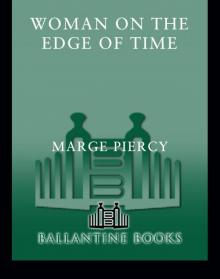 Woman on the Edge of Time
Woman on the Edge of Time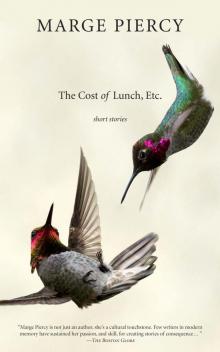 The Cost of Lunch, Etc.: Short Stories
The Cost of Lunch, Etc.: Short Stories Made in Detroit: Poems
Made in Detroit: Poems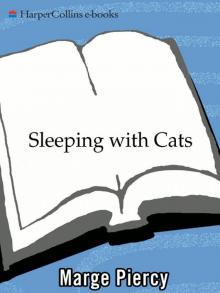 Sleeping With Cats
Sleeping With Cats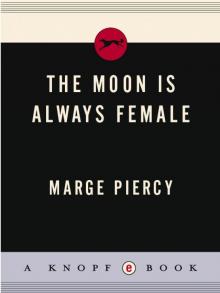 Moon Is Always Female
Moon Is Always Female The Longings of Women
The Longings of Women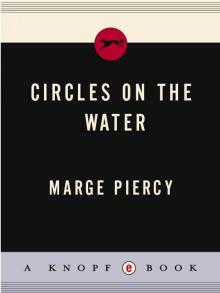 Circles on the Water
Circles on the Water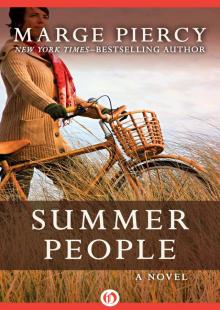 Summer People
Summer People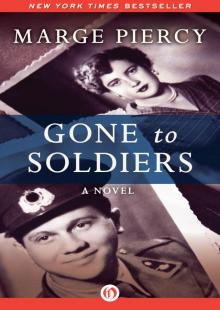 Gone to Soldiers: A Novel
Gone to Soldiers: A Novel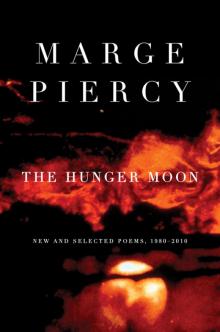 The Hunger Moon: New and Selected Poems, 1980-2010
The Hunger Moon: New and Selected Poems, 1980-2010 Vida
Vida Fly Away Home
Fly Away Home He, She and It
He, She and It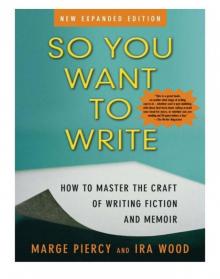 So You Want to Write
So You Want to Write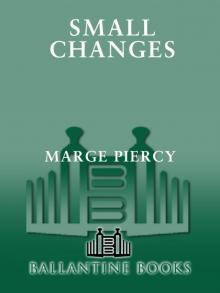 Small Changes
Small Changes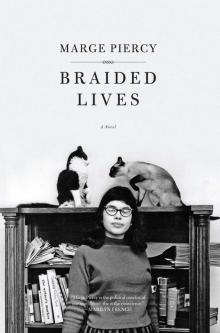 Braided Lives
Braided Lives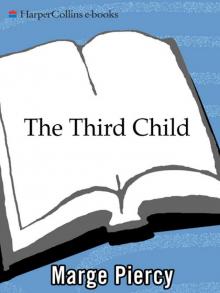 Lord Valentine's Castle
Lord Valentine's Castle Dance the Eagle to Sleep
Dance the Eagle to Sleep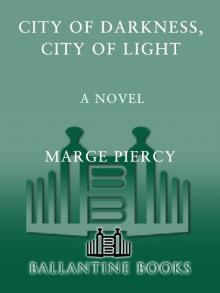 City of Darkness, City of Light
City of Darkness, City of Light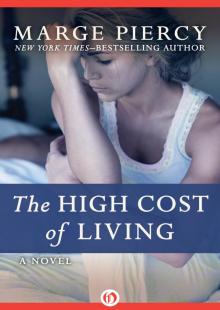 The High Cost of Living: A Novel
The High Cost of Living: A Novel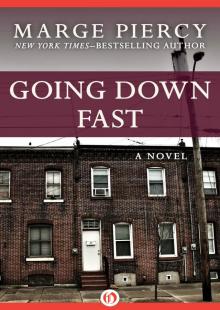 Going Down Fast: A Novel
Going Down Fast: A Novel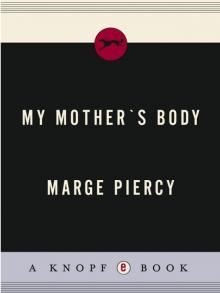 My Mother's Body
My Mother's Body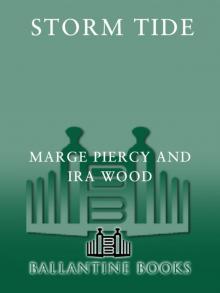 Storm Tide
Storm Tide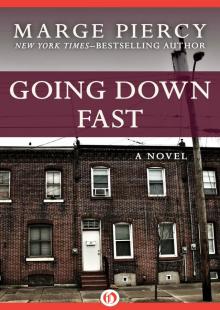 Going Down Fast
Going Down Fast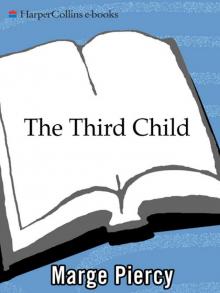 The Third Child
The Third Child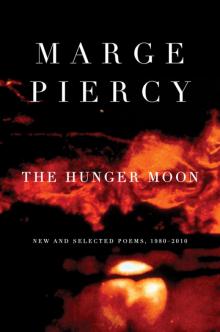 The Hunger Moon
The Hunger Moon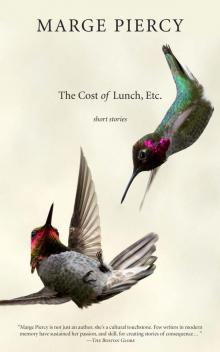 The Cost of Lunch, Etc.
The Cost of Lunch, Etc. Sex Wars
Sex Wars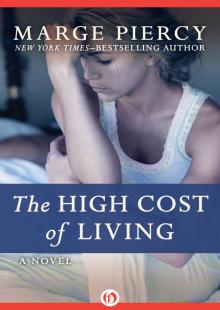 The High Cost of Living
The High Cost of Living Made in Detroit
Made in Detroit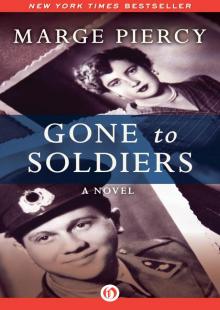 Gone to Soldiers
Gone to Soldiers